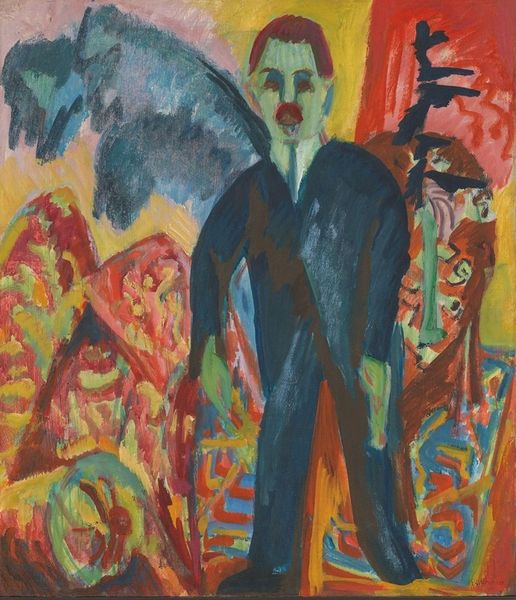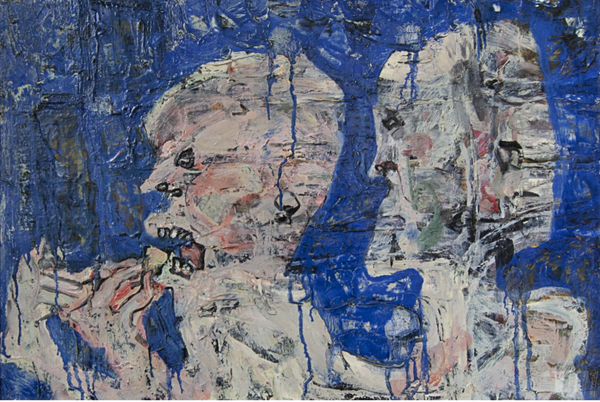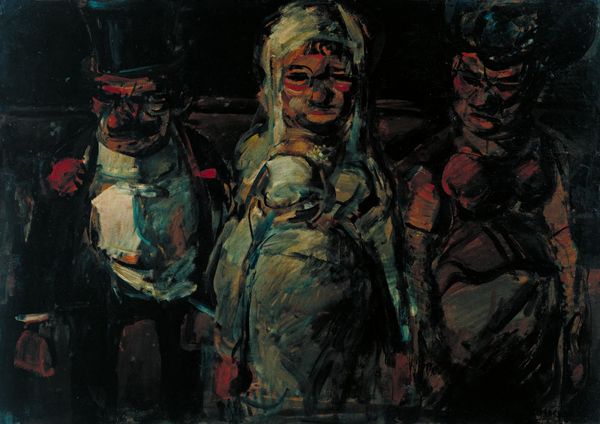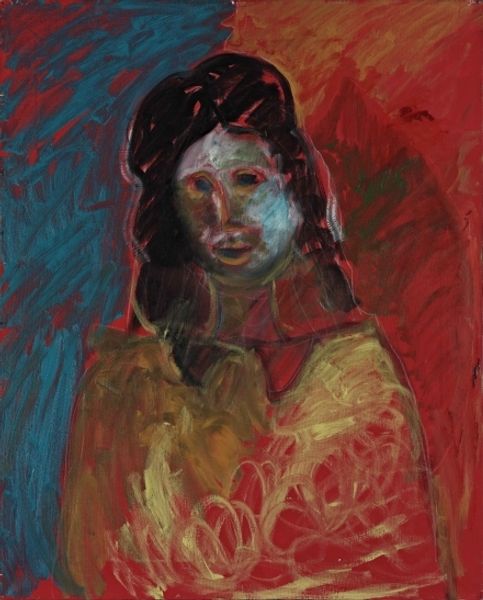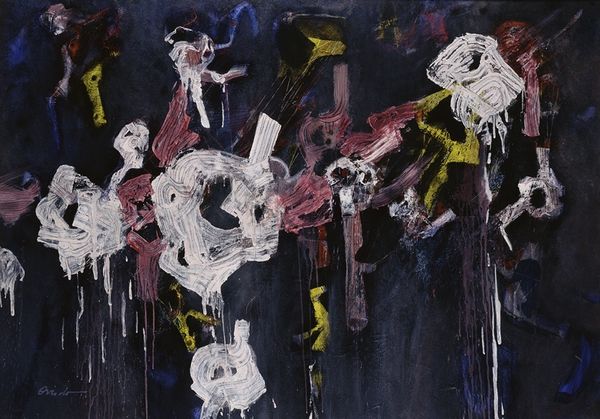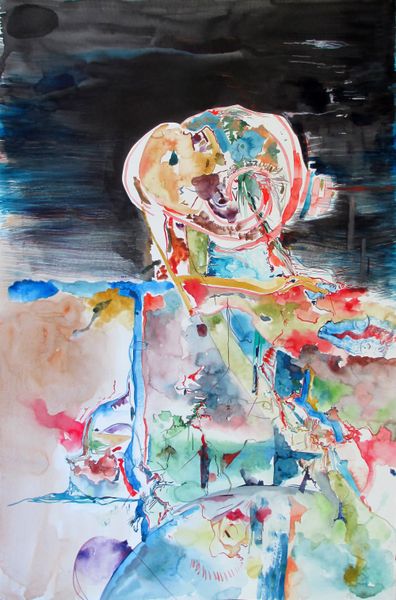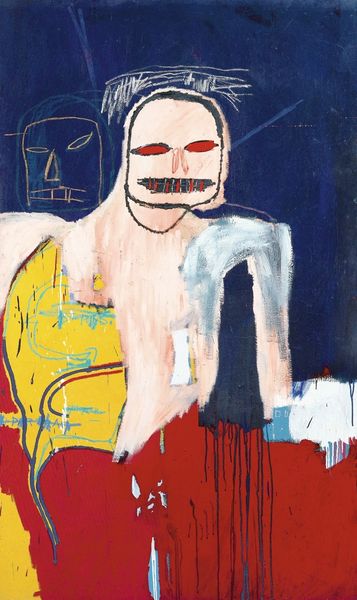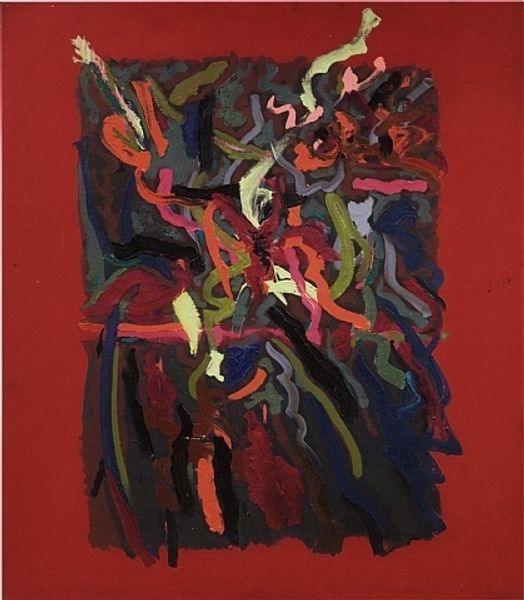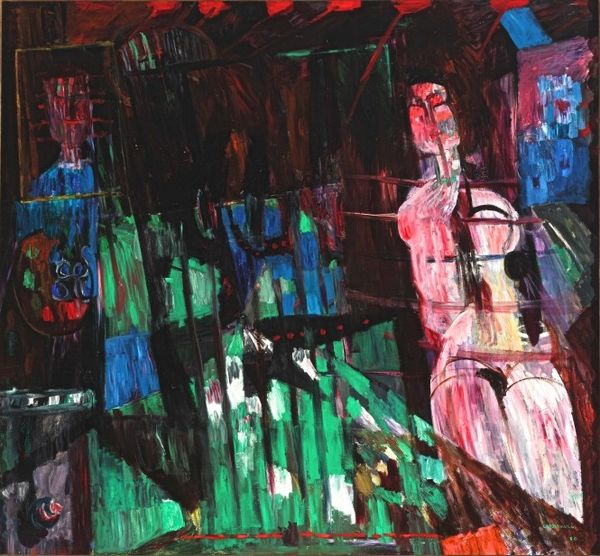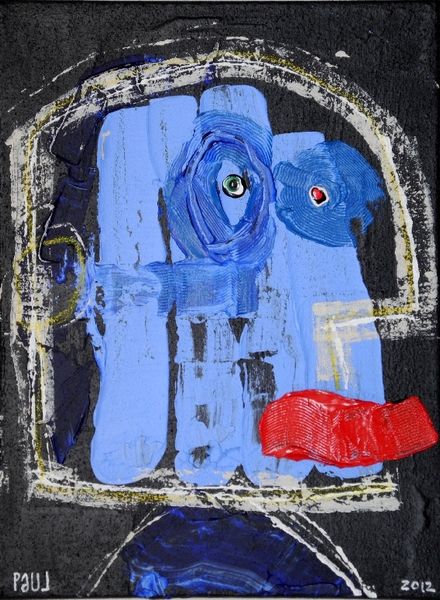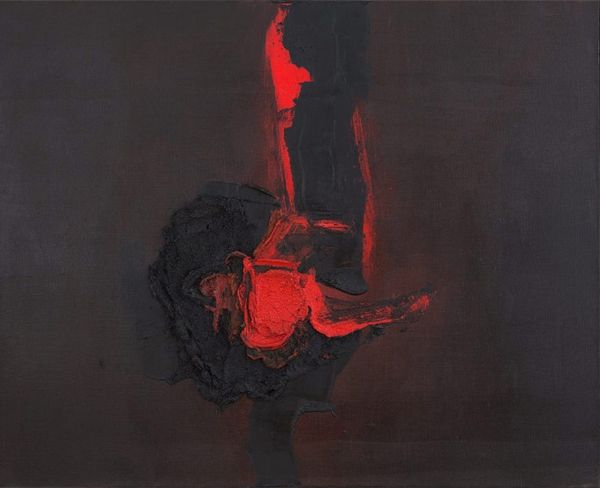
oil-paint, acrylic-paint
#
portrait
#
acrylic
#
oil-paint
#
acrylic-paint
#
figuration
#
oil painting
#
neo expressionist
#
neo-expressionism
#
group-portraits
#
portrait art
#
modernism
Copyright: Tano Festa,Fair Use
Curator: Penelope, a compelling acrylic and oil on canvas piece, was brought to life in 1986 by Tano Festa. Editor: There's a rawness here; the stark contrast and deliberately crude execution of the faces give it an almost confrontational quality. It certainly unsettles the eye. Curator: Festa often employed bold gestures in his work, and here the Neo-Expressionist style is evident in the layering and the immediacy of the paint application. Look at the visible brushstrokes and how they build texture. This active process becomes a key part of its meaning, blurring the line between the represented image and the labor involved in its creation. Editor: Agreed. The choice of 'Penelope' as a title seems significant in this context. In Homer's *Odyssey*, Penelope is a symbol of fidelity and perseverance, endlessly weaving and unweaving a shroud. Are we to interpret the painting's rough, almost unfinished quality as a commentary on the fragmented and imperfect nature of identity, and perhaps on female identity in particular? Curator: Potentially, yes, or even about the role that painting had taken within mass cultural construction. But don’t forget that the readymade was one of his biggest influences, which also encouraged an engagement with industrial society as a whole. Festa frequently repeated specific images and materials – what could it reveal that we see his work more like production? Editor: I appreciate that viewpoint – viewing art through a process-based and production-oriented lens—it shifts our focus to not just the meaning of the final art object, but also how its coming into being is shaped by social, political, and economic forces. I have to admit that seeing its creation also allows me to relate more deeply to the artwork and interpret it as a kind of document or social artifact, reflecting the era in which it was made. Curator: And how its means are available to contemporary practice and makers now, yes? Editor: Absolutely! It allows me to view works and understand how histories are told and retold based on a person’s gender and lived experience. Curator: Examining Tano Festa’s ‘Penelope’ with an increased insight into his technical processes has transformed my perceptions as to how images and their making have taken up the mantle in shaping the collective visual conscience. Editor: Indeed; the raw application and stark contrast provide not just an image, but rather evidence of the active deconstruction, or reweaving of female archetypes and the human psyche in paint.
Comments
No comments
Be the first to comment and join the conversation on the ultimate creative platform.
